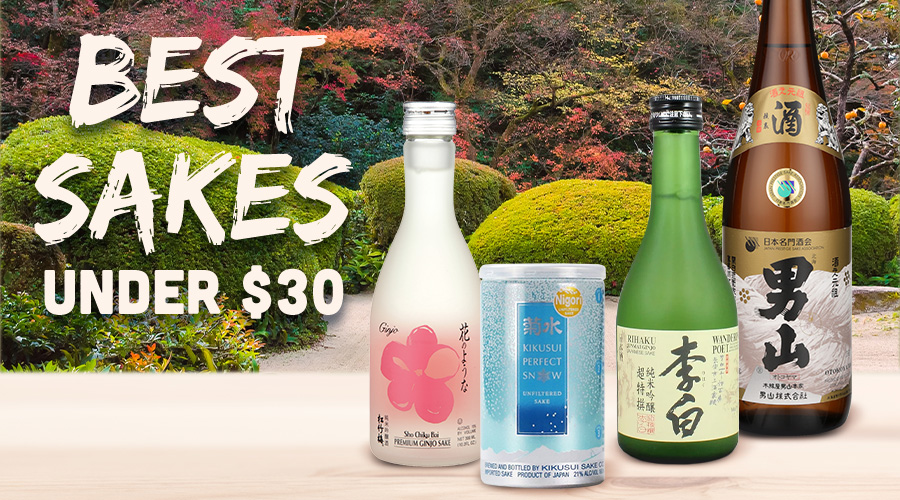
When you think about saké you probably think about Japan and rice, and you’d be correct on both counts. Saké, the oldest known spirit in the world, is often incorrectly referred to as rice wine. Rice wine, like Western wine with grapes, is made from the fermentation of rice. While saké is indeed made from rice, it goes through a brewing process where starch is converted to alcohol much like how beer is brewed, although the ABV is substantially higher than either beer or wine. Wine typically contains an ABV between 9% and 16%, while beer is usually around 3% to 9%. Undiluted sake, however, has an ABV of about 18%-20%. If sake is diluted with water before it is bottled, the ABV will be around 15%.
How is Saké Made?
Brewing saké is a rather laborious two-step process.
First, the rice is polished which means it’s milled to remove the unwanted outer layers of the rice grain. Then it is washed, and air dried before being steamed. After the rice is streamed, Koji is kneaded into the rice. Koji is referred to as the national mold of Japan and has been a culinary mainstay in Asia for centuries. Koji helps convert rice starch into sugar that will eventually be turned into alcohol.
The next stage is fermentation and it lasts 25 to 30 days depending on the type of saké being made. Brewers pay close attention and adjust temperature and ingredients as needed. Finally, the rice mash is pressed, and the resulting liquid is bottled as saké.
How To Drink Saké
When drinking saké, the traditional toast you’ll hear is “Kampi!” which translated literally means “dry cup” and is the Japanese word for “cheers!”
Unlike wine, saké does not improve with age, so it’s best to drink it within 2 hours of opening and within a week of purchase. If you choose not to finish a bottle of saké, you should refrigerate it and finish it within two days.
Check out our saké recommendations and get started on your own path to becoming a saké connoisseur! …or at least getting to yell “Saké to me!” with some idea of what you’re talking about.
Top Saké Recommendations
Kikusui Perfect Snow Nigori
Perfect Snow is type of “genshu” – an undiluted sake. Meaning it contains no diluting water allowing you to enjoy the pure flavor of the sake. Perfect Snow is a white, cloudy sake reminiscent of pure snow, with a crisp, dynamic flavor despite its sweet, full-bodied palate and higher alcohol content. Best taken well-chilled on its own or on the rocks, or you can mix it with soda or milk to draw out the flavors.
Sho Chiku Bai Ginjo Sake
In 1992, Takara introduced the first ginjo sake made in the USA, Sho Chiku Bai Premium Ginjo, and it has remained one of the top-selling junmai ginjo sakes in the US. This dry, delicate and fruity sake features a smooth, silky texture, tinged with flavors of pear, melon, honeysuckle, custard, and nutmeg. The finish is clean and refreshing with an emerging taste of lightly salted fruit.
Rihaku Wandering Poet Sake
With broad appeal and a memorable, sturdy flavor, this sake has the ability to complement even the most wine-unfriendly vegetables. Notes of banana and ripe honeydew with a clean, crisp acidity that highlights its light-to-medium body. The lingering finish moves from juicy fruitiness to green, herbal notes making it a great food companion.
Otokoyama Tokubetsu Junmai
“Otokoyama” literally translates to “Man Mountain.” The name alludes to the drinking parties some samurais had before war. This sake packs a dry, full-bodied taste with hints of dark plum or black cherry. It’s become synonymous with good sake worldwide due to its perfect flavor for pairing with Japanese sushi and sashimi. This well-balanced saké goes well with food and features a robust rice flavor that is excellent warm.
Copyright 2023 Spec’s Wines, Spirits & Finer Foods. All rights reserved. This material may not be published, broadcast, rewritten, or redistributed.




